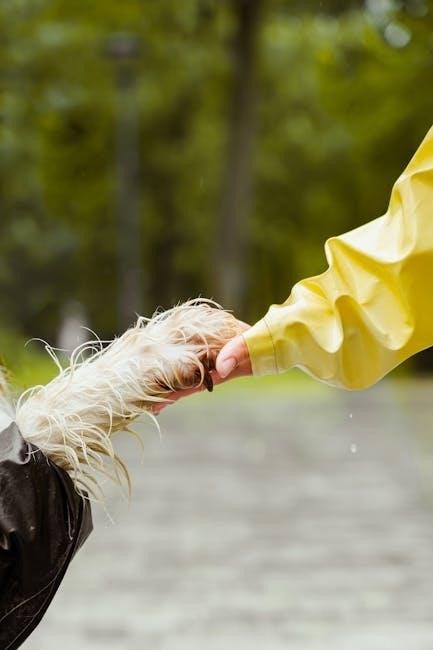Evinrude outboard motors are renowned for their innovative design, fuel efficiency, and reliability. Established in 1907, Evinrude offers high-performance engines with advanced E-TEC technology. Owners benefit from comprehensive service and repair manuals, ensuring optimal maintenance and operation.
1.1 Brief History of Evinrude Engines
Evinrude outboard engines were first introduced by Ole Evinrude in 1907, revolutionizing boating with the first practical outboard motor. Known for innovation, Evinrude developed the Light Twin in 1911, becoming a leader in marine technology. Over the years, the company has maintained its commitment to quality and performance, culminating in the introduction of E-TEC technology in 2003.
1.2 Overview of Evinrude Outboard Motors
Evinrude outboard motors are celebrated for their innovative design, combining fuel efficiency, reliability, and powerful performance. With advanced E-TEC technology, they offer a smooth and durable operation. These motors are supported by comprehensive service and repair manuals, ensuring owners can maintain and troubleshoot their engines with ease, making them a trusted choice for boating enthusiasts worldwide.

Key Features of Evinrude Engines
Evinrude engines boast advanced E-TEC technology, exceptional fuel efficiency, and unmatched reliability. They also feature a 10-year factory-backed warranty, ensuring long-term performance and owner satisfaction.
2.1 E-TEC Technology
Evinrude’s E-TEC technology is a cutting-edge direct fuel injection system, offering exceptional power, efficiency, and reliability. It reduces emissions and maintenance needs, providing a cleaner, quieter operation. Owners benefit from lower operating costs and extended engine life, making E-TEC a standout feature in Evinrude’s innovative engine design.
2.2 Fuel Efficiency and Reliability
Evinrude engines are engineered for superior fuel efficiency and dependability, ensuring optimal performance on the water. Their advanced designs minimize fuel consumption while delivering powerful output. Reliability is enhanced through robust construction and adherence to strict quality standards, making Evinrude a trusted choice for boating enthusiasts seeking both efficiency and durability in their outboard motors.
2.4 Warranty and Support
Evinrude offers a comprehensive 10-year factory-backed warranty, providing owners with non-declining coverage for their outboard motors. This program ensures long-term protection and peace of mind. Additionally, Evinrude provides extensive support, including access to maintenance guides, troubleshooting tips, and service manuals, helping owners maintain their engines efficiently and address any issues promptly.
Safety Precautions
Evinrude outboard motors require adherence to safety guidelines, proper operation, use of protective gear, and regular inspections to ensure reliability and user safety.
3.1 General Safety Guidelines
Always wear protective gear, including a life jacket and gloves, when operating an Evinrude outboard motor. Ensure proper ventilation to avoid carbon monoxide buildup. Regularly inspect propellers, fuel lines, and electrical systems for damage. Follow safe fueling practices, keeping the area clear of open flames. Familiarize yourself with emergency shutdown procedures and keep a fire extinguisher onboard. Refer to the owner’s manual for detailed safety protocols.
- Never operate the motor in confined spaces.
- Ensure all passengers are seated safely during operation.
- Keep children away from controls unless supervised.
3.2 Emergency Procedures
In case of an emergency, immediately cut the engine power and secure the area. Use a fire extinguisher if a fire occurs. If the propeller is damaged, stop the engine to prevent further damage. Always carry a distress signal kit and ensure all passengers wear life jackets. Refer to the owner’s manual for detailed procedures on handling emergencies effectively.
- Stay calm and assess the situation.
- Alert nearby boats or authorities if needed.
- Follow shutdown and evacuation protocols.

Operating Instructions
Consult the owner’s manual for detailed guidance on starting, stopping, and controlling the engine. Ensure proper throttle and steering operation for safe and efficient boating experiences.
4.1 Starting and Stopping the Engine
Refer to the owner’s manual for specific guidelines on starting and stopping the Evinrude engine. Ensure the boat is in water before starting to prevent damage. Use the choke for cold starts and gradually increase throttle. To stop, reduce speed and use the kill switch. Always follow safety protocols and manufacturer instructions for smooth operation.
4.2 Throttle and Steering Controls
Proper use of throttle and steering controls ensures smooth operation. The throttle regulates engine speed, while the steering system provides directional control. Gradually increase throttle to avoid sudden acceleration. Use steering gently, especially at higher speeds, for precise maneuvering. Always consult the owner’s manual for specific instructions tailored to your Evinrude model for optimal performance and safety.
4.3 Monitoring Engine Performance
Monitoring engine performance is crucial for optimal operation. Use gauges and indicators to track RPM, temperature, and oil levels. Regularly check for warning lights and unusual vibrations. Refer to the owner’s manual for guidelines on maintaining peak performance. Address issues promptly to ensure engine longevity and reliability. Consistent monitoring helps prevent unexpected breakdowns and ensures safe boating experiences.

Maintenance and Service
Regular maintenance ensures optimal performance and longevity. Follow the owner’s manual for oil changes, filter replacements, and propeller inspections. Address issues promptly to prevent complications and ensure reliability.
5.1 Routine Maintenance Schedule
Adhere to the owner’s manual for a detailed routine maintenance schedule. Regularly check oil levels, filters, and propeller condition. Follow recommended service intervals for oil changes, spark plug replacements, and gear lubrication. Inspect belts, hoses, and electrical connections. Proper maintenance ensures optimal performance, prevents breakdowns, and prolongs engine life. Always refer to the manual for specific procedures and adjustments.
5.2 Oil and Filter Changes
Regular oil and filter changes are crucial for maintaining your Evinrude outboard motor. Use high-quality marine oil and genuine Evinrude filters. Change the oil every 50 to 100 hours of operation, or as specified in the owner’s manual. Drain the old oil into a pan, replace the filter, and refill with the recommended oil type. Proper disposal of used oil and filters is essential for environmental protection.
5.3 Propeller and Gear Inspection
Regular inspection of the propeller and gear is essential for optimal performance. Check for dents, bending, or corrosion on the propeller blades. Inspect the gear case for leaks or damage; Ensure the propeller nut is tightened to the specified torque using a torque wrench. Perform these checks every 50 to 100 hours of operation, or as recommended in the owner’s manual, to maintain efficiency and prevent damage.

Troubleshooting Common Issues
Evinrude manuals provide detailed troubleshooting guides for common issues like ignition problems, fuel system malfunctions, and engine overheating. Refer to the manual for diagnostic steps and solutions to ensure quick resolution and minimal downtime.
6.1 Diagnosing Engine Problems
Evinrude service manuals provide detailed diagnostic guides for identifying engine issues. Common problems include ignition malfunctions, fuel system leaks, and overheating. Manuals offer step-by-step troubleshooting procedures, such as checking spark plugs, inspecting fuel lines, and monitoring coolant levels. Refer to the specific model’s manual for accurate diagnosis and repair instructions to ensure optimal engine performance and longevity.
6.2 Common Issues and Solutions
Common issues with Evinrude engines include faulty spark plugs, clogged fuel filters, and overheating. Solutions involve replacing spark plugs, cleaning or replacing filters, and checking coolant levels. Manuals provide detailed repair steps, such as inspecting electrical connections and ensuring proper fuel flow. Regular maintenance, as outlined in the manual, helps prevent these issues and ensures reliable performance.
Evinrude E-TEC Technology
Evinrude’s E-TEC technology offers direct fuel injection for superior efficiency and reduced emissions. It enhances performance, ensures reliability, and provides a quieter operation, as detailed in the manual.
7.1 Benefits of E-TEC
The E-TEC technology provides superior fuel efficiency, reduced emissions, and enhanced performance. It offers a quieter operation and requires no regular oil changes, making maintenance easier. This innovative system also ensures lower emissions, contributing to environmental sustainability. These benefits, as outlined in the manual, make E-TEC engines a top choice for boaters seeking reliability and eco-friendly solutions.
7.2 Technical Specifications
Evinrude E-TEC engines range from 15 to 300 horsepower, featuring direct fuel injection for optimal performance. They are lightweight, with models weighing as little as 135 pounds, and offer a maintenance-free design with no oil changes required. The E-TEC system ensures reliable operation, with a robust ignition system and advanced fuel management, delivering consistent power and efficiency across all models.

Accessories and Customization
Evinrude offers a wide range of accessories, including service manuals, repair guides, and customizable parts. These tools enable owners to maintain and personalize their engines for optimal performance and longevity.
8.1 Available Parts and Accessories
Evinrude offers a wide variety of parts and accessories to support engine maintenance and customization. These include propellers, gear cases, and digital service manuals for DIY repairs. Accessories like oil filters and spark plugs ensure optimal performance. Additionally, customizable components allow owners to tailor their engines to specific boating needs, enhancing both functionality and longevity of their outboard motors.
8.2 Customizing Your Engine
Customizing your Evinrude engine allows for personalized performance and style. Owners can select from a range of propellers and gear cases to optimize speed and control. Additionally, Evinrude’s E-TEC technology enables fine-tuning of engine settings. Accessories like custom paint jobs and ergonomic controls further enhance the boating experience, ensuring your engine meets specific needs and preferences for optimal functionality and aesthetics.

Environmental Considerations
Evinrude engines are designed with environmental stewardship in mind, reducing emissions and fuel consumption. Eco-friendly features promote sustainable boating while maintaining high performance standards.
9.1 Eco-Friendly Features
Evinrude outboard motors incorporate eco-friendly features like advanced E-TEC technology, which reduces emissions and fuel consumption. The direct fuel injection system minimizes environmental impact by optimizing combustion efficiency. Additionally, Evinrude engines are designed to produce lower emissions, aligning with environmental regulations and promoting sustainable boating practices. These innovations ensure reduced carbon footprint while maintaining high performance.
9.2 Responsible Boating Practices
Responsible boating practices emphasize adherence to local regulations, environmental respect, and safety. Proper waste disposal, avoiding sensitive ecosystems, and minimizing fuel spillage are key. Regular maintenance ensures optimal performance and reduces emissions. Always follow safety guidelines, such as using life jackets and staying informed about weather conditions, to protect both people and the environment while boating.

Downloading and Using the Manual
Evinrude owners can access digital manuals via the BRP website, using model numbers for easy navigation. Manuals provide detailed instructions for operation, maintenance, and troubleshooting.
10.1 Accessing Digital Manuals
Evinrude owners can access digital manuals on the BRP website by entering their model number or using the dropdown search method. Manuals are available as downloadable PDFs in multiple languages, including English, Spanish, and French. Older models’ manuals can also be found through third-party sites or by contacting BRP directly for assistance.
10.2 Navigating the Manual
Evinrude digital manuals are structured for easy navigation, with a clear table of contents and searchable text. Users can quickly locate sections on safety, maintenance, and troubleshooting. Visual aids like diagrams and charts enhance understanding. The manual also includes hyperlinks for quick access to specific topics, making it user-friendly for owners to find the information they need efficiently.
Historical Models and Manuals
Evinrude’s historical models, such as vintage outboards from the 1950s to 2010s, have comprehensive service and repair manuals available. These resources support maintenance and repair needs for classic engines.
11.1 Vintage Evinrude Models
Vintage Evinrude models, spanning from the 1950s to the 2010s, are sought after by collectors and enthusiasts. These classic outboards, such as the 1965 Ski-Twin and 1971 Mate 2HP, have dedicated service and repair manuals available. Original or downloadable PDF versions provide detailed instructions for maintenance and restoration, ensuring these historical engines remain operational and preserved for future generations.
11.2 Accessing Older Manuals
Accessing older Evinrude manuals is straightforward, with options for both original printings and digital downloads. Websites like Ken Cook Co. and WatercraftManuals.Com offer vintage manuals from the 1950s to 2010s. Users can purchase or download PDF versions of service and repair guides for models like the 1965 Ski-Twin or 1971 Mate 2HP, ensuring easy access to historical maintenance information.
Comparing Evinrude to Other Brands
Evinrude stands out for its cutting-edge E-TEC technology, offering superior fuel efficiency and a 10-year warranty, making it a top choice among outboard motor brands with lower emissions.
12.1 Market Position
Evinrude holds a strong position in the outboard motor market, known for its innovative E-TEC technology and eco-friendly designs. As a leader in the industry, Evinrude is recognized for its reliability and performance, offering a competitive edge with its 10-year warranty and minimal maintenance requirements, making it a preferred choice for boating enthusiasts worldwide.
12.2 Competitive Advantages
Evinrude outboard motors excel with their cutting-edge E-TEC technology, offering superior fuel efficiency, low emissions, and minimal maintenance. The 10-year factory-backed warranty provides unparalleled security, while the direct fuel injection system enhances performance and durability. These features, combined with a reputation for reliability, position Evinrude as a top choice for boaters seeking high-quality, eco-friendly, and cost-effective outboard solutions.

User Testimonials and Reviews
Owners praise Evinrude’s E-TEC technology for its fuel efficiency and reliability. Comprehensive manuals and exceptional performance have earned high satisfaction, with many highlighting durability and low maintenance.
13.1 Owner Feedback
Evinrude outboard motors have received positive feedback from owners, praising their reliability, fuel efficiency, and ease of operation. Many highlight the comprehensive service manuals, which simplify maintenance and troubleshooting. Owners appreciate the durability and performance of Evinrude engines, noting reduced maintenance needs compared to other brands. The availability of detailed repair guides ensures owners can keep their motors in optimal condition, enhancing overall satisfaction and boating experiences.
13.2 Real-World Experiences
Owners have shared positive real-world experiences with Evinrude outboard motors, emphasizing their reliability and fuel efficiency. Many report minimal maintenance needs due to advanced E-TEC technology. The availability of detailed service manuals has been praised for simplifying troubleshooting and repairs. Overall, users highlight the durability and performance of Evinrude engines, making them a trusted choice for boating enthusiasts seeking trouble-free operation and long-term satisfaction.

The Future of Evinrude Engines
Evinrude continues to innovate with advanced E-TEC technology, focusing on sustainability and performance. Future models promise enhanced fuel efficiency, reduced emissions, and smarter engine management, aligning with eco-friendly boating practices.
14.1 Innovations and Updates
Evinrude is committed to advancing outboard technology with a focus on sustainability and performance. Recent updates include enhanced E-TEC innovations, improved fuel efficiency, and reduced emissions. The integration of smart engine management systems ensures optimal performance while maintaining eco-friendly standards. Owners can expect extended warranty coverage and access to advanced diagnostic tools for better maintenance and operation. These updates reflect Evinrude’s dedication to delivering cutting-edge solutions for modern boating needs.
14.2 Sustainability Initiatives
Evinrude prioritizes environmental responsibility through eco-friendly engine designs. Their E-TEC technology reduces emissions and fuel consumption, promoting sustainable boating. Initiatives include energy-efficient manufacturing processes and recyclable materials. Evinrude also supports conservation efforts, encouraging responsible boating practices. These sustainability efforts align with global environmental goals, ensuring a greener future for marine recreation while maintaining high-performance standards.
Evinrude outboard motors combine innovation, reliability, and sustainability. E-TEC technology provides exceptional performance while minimizing environmental impact. Owners rely on Evinrude for durability and support, ensuring boating experiences. Regular maintenance, as per the manual, ensures longevity.
15.1 Summary of Key Points
Evinrude outboard motors are celebrated for their durability, fuel efficiency, and advanced E-TEC technology. Owners benefit from comprehensive manuals, ensuring proper maintenance and troubleshooting. The brand’s commitment to innovation and sustainability, along with robust customer support, makes Evinrude a trusted choice for boating enthusiasts, providing unmatched performance and reliability for years of seamless operation.
15.2 Final Tips for Owners
- Always follow the recommended maintenance schedule in your Evinrude manual.
- Regularly inspect propellers and gear for damage.
- Familiarize yourself with troubleshooting guides for quick issue resolution.
- Keep engine software updated for the latest features.
- Use genuine Evinrude parts to maintain reliability and warranty.
These practices ensure longevity and peak performance of your outboard motor.


















































